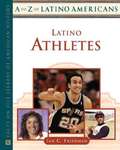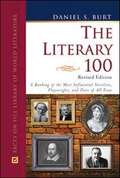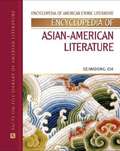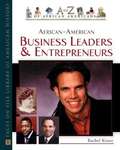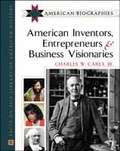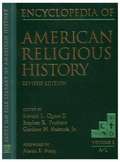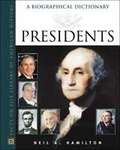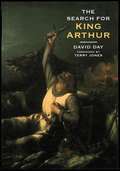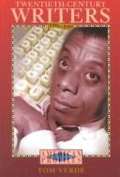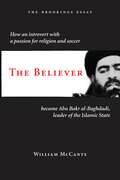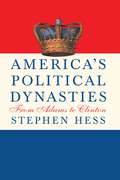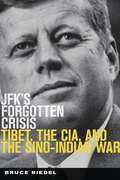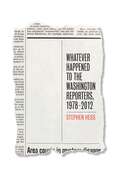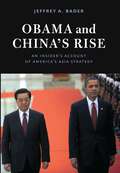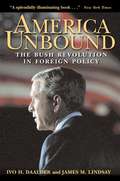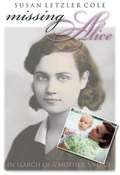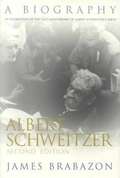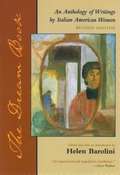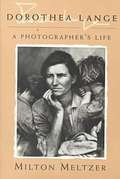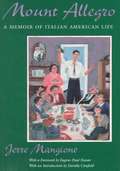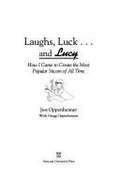- Table View
- List View
Road to Tara: The Life of Margaret Mitchell
by Anne Edwards[from inside flaps] "Torn between a desire to be a part of the rigid Southern social structure and a compulsion to scorn it, Peggy Mitchell grew up something of an outcast. Only after the publication of Gone with the Wind, which she reluctantly relinquished into the hands of a Macmillan editor, did Peggy's fame elevate her above her Atlanta peers. And fame became, in the end, more of a burden than a joy to her. In this fascinating biography, Anne Edwards gets to the heart of the tiny woman who created a legend and, in so doing, became something of a legend herself. The author draws parallels between people Peggy Mitchell actually knew and the characters in her best-seller. We learn that Gone with the Wind, novel and movie, is the culminating triumph of an otherwise tragic life."
Latino Athletes
by Ian C. FriedmanA book about 175 Latinos who have made significant accomplishments in athletics in the U.S. and the world.
The Literary 100: A Ranking of the Most Influential Novelists, Playwrights, and Poets of All Time
by Daniel S. BurtBurt (literature, Wesleyan University) updates his 2001 edition of the one hundred most influential writers of all time, adding twenty-five to the list. To decide on whom to include, Burt polled both other scholars and students. In the end, he also relied on his own judgment. While most of the writers are from the Western tradition, he also includes African, Chinese and Japanese works, all of which are available in English translations. The entries are arranged idiosyncratically. Each one contains a portrait (if possible) and begins with a quotation either from or about the author. Burt gives a thumbnail sketch of the person's life and work, along with the reason why he or she was selected. Annotation ©2009 Book News, Inc., Portland, OR (booknews.com)
Encyclopedia of Asian American Literature
by Seiwoong OhThis encyclopedia, meant for high school and college students, contains 337 entries on Asian-American writers and their major literary works, with an emphasis on fiction, poetry, and drama. Oh (English, Rider U.) includes some Canadian authors such as Joy Kogawa for their importance to the literary canon. Writers and works were chosen to meet the criteria teachers use when selecting them: aesthetic value, historical significance, teachability, and commercial availability. These include Maxine Hong Kingston, Amy Tan, Henry Hwang, Ha Jin, Chang-rae Lee, Khaled Hosseini, writers of detective fiction such as Leonard Chang, and young adult authors such as Linda Sue Park. Entries, which were written by specialists based in the US, Asia, and Europe, consist of information about each author, synopses, and critical analyses. Some memoirs, screenwriting, nonfiction, and experimental writings have been included. Annotation ©2007 Book News, Inc., Portland, OR (booknews.com)
African-American Business Leaders and Entrepreneurs
by Rachel KranzTo fill a gap in US history, an author/documentary film producer specializing in racial issues profiles a broad spectrum of African-American business leaders from the colonial period to the present. Entries are listed by type of business and individual's year of birth. Among the figures featured on the cover are Maggie L. Walker (1867-1934), the first US woman bank president, and Omar Wasow, who created a black-oriented Web site. Annotation ©2004 Book News, Inc., Portland, OR (booknews.com)
American Inventors, Entrepreneurs, and Business Visionaries
by Charles W. CareyFaced with limiting his coverage to less than 300 people, Carey (US history and western civilization, Lynchburg College and Central Virginia Community College) had little trouble including the famous figures that would be expected in such an account. After that, he strove to represent all categories of American life in order to demonstrate that people from all backgrounds have been and therefore can be successful innovators and visionaries in business. Annotation c. Book News, Inc., Portland, OR (booknews.com)
The Encyclopedia of American Religious History (Volume I, A-L)
by Edward L. Queen Stephen R. Prothero Gardiner H. ShattuckQueen (ethics and servant leadership, Emory U.), Stephen Prothero (religion, Boston U.) and Gardiner Shattuck (history of Christianity, Andover Newton Theological School of Massachusetts) lead a team of scholars in updating the broad reference from its 1996 and 2001 editions. It has expanded to three volumes to encompass the growing importance of information about religion in US politics, society, and culture since earlier editions, and a short history of religion in America has been added. The articles range from short paragraphs to several pages in length, are signed, and provide mostly secondary bibliographies that include World Wide Web sites. The cross-referencing is extensive. Among the topics are African-American religion, William Jennings Bryan, John Paul II, primitivism, Tecumseh, and World's Parliament of Religion. The three volumes are paged and indexed together. Annotation ©2009 Book News, Inc., Portland, OR (booknews.com)
Presidents: A Biographical Dictionary
by Neil R. HamiltonThe president of the United States is a highly visible public figure, a bearer of immense responsibility, and the subject of intense scrutiny. He is held accountable for war, economic depression, domestic strife, national security, partisan politics, and overseas conflict. Presidents: A Biographical Dictionary closely examines the hopes and disappointments, the victories and defeats, and the integrity and weaknesses of the men who have held this office. Each of the profiles presented in this book traces the points at which presidential character, the exercise of power, and external events intersect. Presidents presents information suitable for exploratory research or for a casual reading of the history of the United States's chief executives and their legacies. Presidents contains 4 biographies and portraits of all the presidents, a chronology of the life of each president, suggested further reading about each president, an appendix that presents personal facts about the presidents, election results, and details of the presidential cabinets, a general bibliography and an index. Neil A. Hamilton holds a Ph.D. in history from the University of Tennessee and an M.A. and B.A. in history from the University of Miami. He is currently a professor of history at Spring Hill College in Mobile, Alabama. A member of the Author's Guild, Hamilton is the author or coauthor of eight nonfiction books, including The ABC-Clio Companion to the 1960s Counterculture in America and Militias in America: A Reference Handbook.
The Search for King Arthur
by David DayThis book is a detailed overview of the Arthurian legends. It talks about the actual King Arthur and how the legends about him have evolved over the years.
Twentieth-Century Writers 1950-1990
by Tom VerdeBiographies of Eudora Welty, Saul Bellow, J. D. Salinger, Jack Kerouac, Kurt Vonnegut, James Baldwin, Flannery O'Connor, and John Updike. A glimpse of the society which inspired the author is provided as well as the impact of the author's work on the reading public. This is a fascinating and useful literary resource. A reader interested in sampling the author's writing for the first time will find informative descriptions which will help in selecting a place to start. Those who have already read a book or two by one of the authors can find ideas for further exploration of that author's themes, style and stories. [from the back cover:] "From 1950 to 1990, America underwent tremendous economic, technological, social and cultural change. Emerging from World War II as citizens of a triumphant modern power, Americans saw among other phenomena the cold war, the "Beat," generation of the 1950s, hippies, the Vietnam War, the fight for the rights of women and minorities, Watergate, and the rise and fall of the Regan era. Twentieth-Century writers 1950-1990 explores the literary figures who looked at America during this time and gave us their unique and artful interpretations of modern culture. Twentieth-Century Writers 1950--1990 profiles eight of the most celebrated and compelling voices in American letters since World War II. The literary landscape covered by these authors ranges broadly from John Updike's elite New England prep schools to Jack Kerouac's endless highways, from Flannery O'Connor's twisted South to Saul Bellow's bustling North: from J. D. Salinger's view of alienated adolescence to Kurt Vonnegut's chilling vision of the future. Author Tom Verde skillfully interweaves biographical information with literary criticism and assessments of the authors' work and its significance in American life and culture. The reference value of every book in American Profiles, the series of which Twentieth-Century Writers 1950-1990 is a part is greatly enhanced by the inclusion of chronologies and further reading lists and a concise introduction of the general subject of the book. The first reference of its kind designed with the needs of middle school and high school students in mind, the series presents a wealth of useful information on important Americans and their achievements in all fields of endeavor.
The Believer: How an Introvert with a Passion for Religion and Soccer Became Abu Bakr al-Baghdadi, Leader of the Islamic State (The Brookings Essay)
by William MccantsIn The Believer, Will McCants tells the story of Abu Bakr al-Baghdadi, the leader of the Islamic State (a. k. a. ISIS), a group so brutal and hardline that even al-Qaida deemed them too extreme. Baghdadi, an introverted religious scholar, with a passion for soccer, now controls large swaths of land in Iraq and Syria. McCants shows how Baghdadi became radicalized in the Saddam Hussein era and found his path to power after connecting with other radicals in an American prison during the Iraq War, culminating in his declaration of a reborn Islamic empire bent on world conquest.
Americas Political Dynasties: From Adams to Clinton
by Stephen HessThe Constitution states that "no title of nobility shall be granted by the United States," yet it seems political nobility is as American as apple pie. As Hess illustrates, while there always have been dynasties in America, they have not always been the same families: Dynasties are born and dynasties die, their rise and fall is part of the flux of a constantly changing political scene. America was founded in rebellion against nobility and inherited status. Yet from the start, dynastic families have been conspicuous in national politics. The Adamses. The Lodges. The Tafts. The Roosevelts. The Kennedys. And today the Bushes and the Clintons. Longtime presidential historian Stephen Hess offers an encyclopedic tour of the families that have loomed large over America's political history. Starting with John Adams, who served as the young nation's first vice president and earned the nickname "His Rotundity," Hess paints the portraits of the men and women who, by coincidence, connivance, or sheer sense of duty, have made up America's political elite. There are the well-known dynasties such as the Roosevelts and the Kennedys, and the names that live on only in history books, such as the Bayards (sixgenerations of U. S. senators) and the Breckinridges (a vice president, two senators, and six representatives). Hess fills the pages of America's Political Dynasties with anecdotes and personality-filled stories of the families who have given the United States more than a fair share of its presidents, senators, governors, ambassadors, and cabinet members. This book also tells us the stories of the Bushes and what looks to be a political dynasty in waiting, the Clintons. Emblematic of America's growing diversity, Hess also examines how women, along with ethnic and racial minorities, have joined the ranks of dynastic political families.
JFKs Forgotten Crisis: Tibet, the CIA, and Sino-Indian War
by Bruce RiedelBruce Riedel provides new perspective and insights into Kennedy's forgotten crisis in the most dangerous days of the cold war. The Cuban Missile Crisis defined the presidency of John F. Kennedy. But during the same week that the world stood transfixed by the possibility of nuclear war between the United States and the Soviet Union, Kennedy was also consumed by a war that has escaped history's attention, yet still significantly reverberates today: the Sino-Indian conflict. As well-armed troops from the People's Republic of China surged into Indian-held territory in October 1962, Kennedy ordered an emergency airlift of supplies to the Indian army. He engaged in diplomatic talks that kept the neighboring Pakistanis out of the fighting. The conflict came to an end with a unilateral Chinese cease-fire, relieving Kennedy of a decision to intervene militarily in support of India. Bruce Riedel, a CIA and National Security Council veteran, provides the first full narrative of this crisis, which played out during the tense negotiations with Moscow over Cuba. He also describes another, nearly forgotten episode of U. S. espionage during the war between India and China: secret U. S. support of Tibetan opposition to Chinese occupation of Tibet. He details how the United States, beginning in 1957, trained andparachuted Tibetan guerrillas into Tibet to fight Chinese military forces. The United States did not abandon this covert support until relations were normalized with China in the 1970s. Riedel tells this story of war, diplomacy, and covert action with authority and perspective. He draws on newly declassified letters between Kennedy and Indian leader Jawaharlal Nehru, along with the diaries and memoirs of key players and other sources, to make this the definitive account of JFK's forgotten crisis. This is, Riedel writes, Kennedy's finesthour as you have never read it before.
Mr. Putin
by Fiona Hill Clifford G. GaddyFrom the KGB to the Kremlin: a multidimensional portrait of the man at war with the West. Where do Vladimir Putin's ideas come from? How does he look at the outside world? What does he want, and how far is he willing to go?The great lesson of the outbreak of World War I in 1914 was the danger of misreading the statements, actions, and intentions of the adversary. Today, Vladimir Putin has become the greatest challenge to European security and the global world order in decades. Russia's 8,000 nuclear weapons underscore the huge risks of not understanding who Putin is. Featuring five new chapters, this new edition dispels potentially dangerous misconceptions about Putin and offers a clear-eyed look at his objectives. It presents Putin as a reflection of deeply ingrained Russian ways of thinking as well as his unique personal background and experience.Praise for the first editionIf you want to begin to understand Russia today, read this book. -Sir John Scarlett, former chief of the British Secret Intelligence Service (MI6)For anyone wishing to understand Russia's evolution since the breakup of the Soviet Union and its trajectory since then, the book you hold in your hand is an essential guide.-John McLaughlin, former deputy director of U.S. Central IntelligenceOf the many biographies of Vladimir Putin that have appeared in recent years, this one is the most useful. -Foreign AffairsThis is not just another Putin biography. It is a psychological portrait. -The Financial TimesQ: Do you have time to read books? If so, which ones would you recommend? "My goodness, let's see. There's Mr. Putin, by Fiona Hill and Clifford Gaddy. Insightful." -Vice President Joseph Biden in Joe Biden: The Rolling Stone Interview.
Whatever Happened to the Washington Reporters, 1978-2012
by Stephen HessWhatever Happened to the Washington Reporters, 1978-2012, is the first book to comprehensively examine career patterns in American journalism. In 1978 Brookings Senior Fellow Stephen Hess surveyed 450 journalists who were covering national government for U.S. commercial news organizations. His study became the award-winning The Washington Reporters (Brookings, 1981), the first volume in his Newswork series. Now, a generation later, Hess and his team from Brookings and the George Washington University have tracked down 90 percent of the original group, interviewing 283, some as far afield as France, England, Italy, and Australia.What happened to the reporters within their organizations? Did they change jobs? Move from reporter to editor or producer? Jump from one type of medium to another--from print to TV? Did they remain in Washington or go somewhere else? Which ones left journalism? Why? Where did they go?A few of them have become quite famous, including television correspondents Ted Koppel, Sam Donaldson, Brit Hume, Carole Simpson, Judy Woodruff, and Marvin Kalb; some have become editors or publishers of the New York Times, Wall Street Journal, Chicago Tribune, Miami Herald, or Baltimore Sun; some have had substantial careers outside of journalism. Most, however, did not become household names.The book is designed as a series of self-contained essays, each concentrating on one characteristic, such as age, gender, or place of employment, including newspapers, television networks, wire services, and niche publications. The reporters speak for themselves. When all of these lively portraits are analyzed--one by one--the results are surprisingly different from what journalists and sociologists in 1978 had predicted.
Whatever Happened to the Washington Reporters, 1978-2012
by Stephen HessWhatever Happened to the Washington Reporters, 1978-2012, is the first book to comprehensively examine career patterns in American journalism. In 1978 Brookings Senior Fellow Stephen Hess surveyed 450 journalists who were covering national government for U.S. commercial news organizations. His study became the award-winning The Washington Reporters (Brookings, 1981), the first volume in his Newswork series. Now, a generation later, Hess and his team from Brookings and the George Washington University have tracked down 90 percent of the original group, interviewing 283, some as far afield as France, England, Italy, and Australia. What happened to the reporters within their organizations? Did they change jobs? Move from reporter to editor or producer? Jump from one type of medium to another-from print to TV? Did they remain in Washington or go somewhere else? Which ones left journalism? Why? Where did they go? A few of them have become quite famous, including television correspondents Ted Koppel, Sam Donaldson, Brit Hume, Carole Simpson, Judy Woodruff, and Marvin Kalb; some have become editors or publishers of the New York Times, Wall Street Journal, Chicago Tribune, Miami Herald, or Baltimore Sun; some have had substantial careers outside of journalism. Most, however, did not become household names. The book is designed as a series of self-contained essays, each concentrating on one characteristic, such as age, gender, or place of employment, including newspapers, television networks, wire services, and niche publications. The reporters speak for themselves. When all of these lively portraits are analyzed-one by one-the results are surprisingly different from what journalists and sociologists in 1978 had predicted.
Obama and China's Rise
by Jeffrey A. Bader"Future presidents will need to find the right balance in China policy, so as to maintain America's strength and watchfulness but not fall into the classic security dilemma, wherein each side believes that growing capabilities reflect hostile intent and responds by producing that reality. I believe that President Obama struck that balance." --From Obama and China's RiseIn 2005, veteran diplomat and Asia analyst Jeffrey Bader met for the first time with the then-junior U.S. senator from Illinois. When Barack Obama entered the White House a few years later, Bader was named the senior director for East Asian affairs on the National Security Council, becoming one of a handful of advisers responsible for formulating and implementing the administration's policy regarding that key region. For obvious reasons--a booming economy, expanding military power, and increasing influence over the region--the looming impact of a rising China dominated their efforts.Obama's original intent was to extend U.S. influence and presence in East Asia, which he felt had been neglected by a Bush administration fixated on the Middle East, particularly Iraq, and the war on terror. China's rise, particularly its military buildup, was heightening anxiety among its neighbors, including key U.S. allies Japan and South Korea. Bader explains the administration's efforts to develop stable relations with China while improving relationships with key partners worried about Beijing's new assertiveness.In Obama and China's Rise, Bader reveals what he did, discusses what he saw, and interprets what it meant--first during the Obama campaign, and then for the administration. The result is an illuminating backstage view of the formulation and execution of American foreign policy as well as a candid assessment of both. Bader combines insightful and authoritative foreign policy analysis with a revealing and humanizing narrative of his own personal journey.
Obama and China's Rise
by Jeffrey A. Bader"Future presidents will need to find the right balance in China policy, so as to maintain America's strength and watchfulness but not fall into the classic security dilemma, wherein each side believes that growing capabilities reflect hostile intent and responds by producing that reality. I believe that President Obama struck that balance." -From Obama and China's RiseIn 2005, veteran diplomat and Asia analyst Jeffrey Bader met for the first time with the then-junior U.S. senator from Illinois. When Barack Obama entered the White House a few years later, Bader was named the senior director for East Asian affairs on the National Security Council, becoming one of a handful of advisers responsible for formulating and implementing the administration's policy regarding that key region. For obvious reasons-a booming economy, expanding military power, and increasing influence over the region-the looming impact of a rising China dominated their efforts.Obama's original intent was to extend U.S. influence and presence in East Asia, which he felt had been neglected by a Bush administration fixated on the Middle East, particularly Iraq, and the war on terror. China's rise, particularly its military buildup, was heightening anxiety among its neighbors, including key U.S. allies Japan and South Korea. Bader explains the administration's efforts to develop stable relations with China while improving relationships with key partners worried about Beijing's new assertiveness.In Obama and China's Rise, Bader reveals what he did, discusses what he saw, and interprets what it meant-first during the Obama campaign, and then for the administration. The result is an illuminating backstage view of the formulation and execution of American foreign policy as well as a candid assessment of both. Bader combines insightful and authoritative foreign policy analysis with a revealing and humanizing narrative of his own personal journey.
America Unbound: The Bush Revolution in Foreign Policy
by Ivo H. Daalder James M. LindsayAnalysis of George W. Bush's foreign policy, specifically from the start of his administration to mid 2003.
Missing Alice: In Search of a Mother's Voice
by Susan Letzler ColePublisher's Summary: "Author Susan Letzler Cole lost her mother, Alice, to cancer in 1990. In this 'autobiography of two voices,' she traces a daughter's search to recover the 'missing parts' of a mother, to know her as an individual for the first time. Shunning linear narrative, Cole experiments with a variety of approaches: letters written to her mother three years after Alice died at the age of 78; oral history via taped conversations between mother and daughter during Alice's illness; excerpts from her 14-year-old mother's 1926 diary juxtaposed with the author's expost facto letters to the adolescent diarist. Finally, Cole's own diary entries contemplate vital themes of family, love, and time. At once innovative and heartfelt, 'Missing Alice' seeks to make heard one of those 'lost' women's voices that speak from and help create the world that we know. It is a fine choice for classes in biography, autobiography, and women's writing, as well as American Jewish and immigrant experience, oral history/memoir, and grief therapy." Even though this book is a non-fiction work, it reads like a novel with sophisticated literary styles. Hopefully, by reading this book, the reader will learn a greater appreciation for life and relationships and will be able to show greater outward love to others.
Albert Schweitzer: A Biography
by James BrabazonJames Brabazon updates his critically acclaimed biography of humanitarian Albert Schweitzer to include a wealth of recently discovered documents, including the letters between Schweitzer and Helene Bresslau written during the ten years before their marriage. Brabazon's research has also included recently released documents from the State Department regarding Schweitzer's battle with the United States Atomic Energy Commission to halt H-bomb tests.
The Dream Book: An Anthology Of Writing By Italian American Women
by Helen BaroliniA collection of 56 works by Italian American women writers, drawing on rare sources and archival material. Works encompass genres of prose, poetry, oral history, and fiction. An introductory essay examines barriers to Italian American women writers, within their own ethnic tradition and within the world of publishing. Originally published in 1985 by Schocken Books. Barolini is author of seven books and many short stories.
Dorothea Lange: A Photographer's Life
by Milton MeltzerLange's famous </Migrant Mother/> (1936) graces the cover of this biography (1895-1965) originally published in 1978 (Farrar, Straus, & Giroux), which includes her photo retrospective of the US Depression and a new foreword. Meltzer has some 90 biographies and histories to his credit. Annotation c. Book News, Inc., Portland, OR (booknews.com)
Mount Allegro: A Memoir of Italian American Life
by Jerre MangioneMount Allegro is an extraordinary memoir, a celebration of Sicilian life, an engaging sociological portrait, a moving reminiscence of a fledgling writer's escape from the restrictive culture in which he grew up. Jerre Mangione's autobiographical chronicle of his youth in a Sicilian Community in Rochester is one of the truly enduring books about the immigrant experience in this country. Family squabbles, soul-nourishing food, and the casting of evil eyes are only some of the ingredients of this richly textured book, although they must all take second place to its unforgettable characters. As Eugene Paul Nassar writes in the book's Foreword, "Mount Allegro . . . gave a literary visibility and identity, amiable and appealing, to a poorly understood ethnic group in America, and did so at a very high level of artistry. " Book jacket.
Laughs, Luck...and Lucy: How I Came to Create the Most Popular Sitcom of All Time
by Jess Oppenheimer Gregg OppenheimerLaughs indeed as Jess Oppenheimer charts his rise from radio station gofer to inventor of the sitcom, as he winds up writing--then producing--Lucille Ball's show, first on radio, then on television. Luck, too, as the author recounts the good fortune that has him, within minutes of arrival in Hollywood, sitting down at a lunch counter and getting a tip that secures a job within days and a career for life. Ironic, too, that this inveterate TV writer had to be cajoled for years to set down these Hollywood heyday memoirs. He never finished, and it was left to son Gregg to complete the book.

